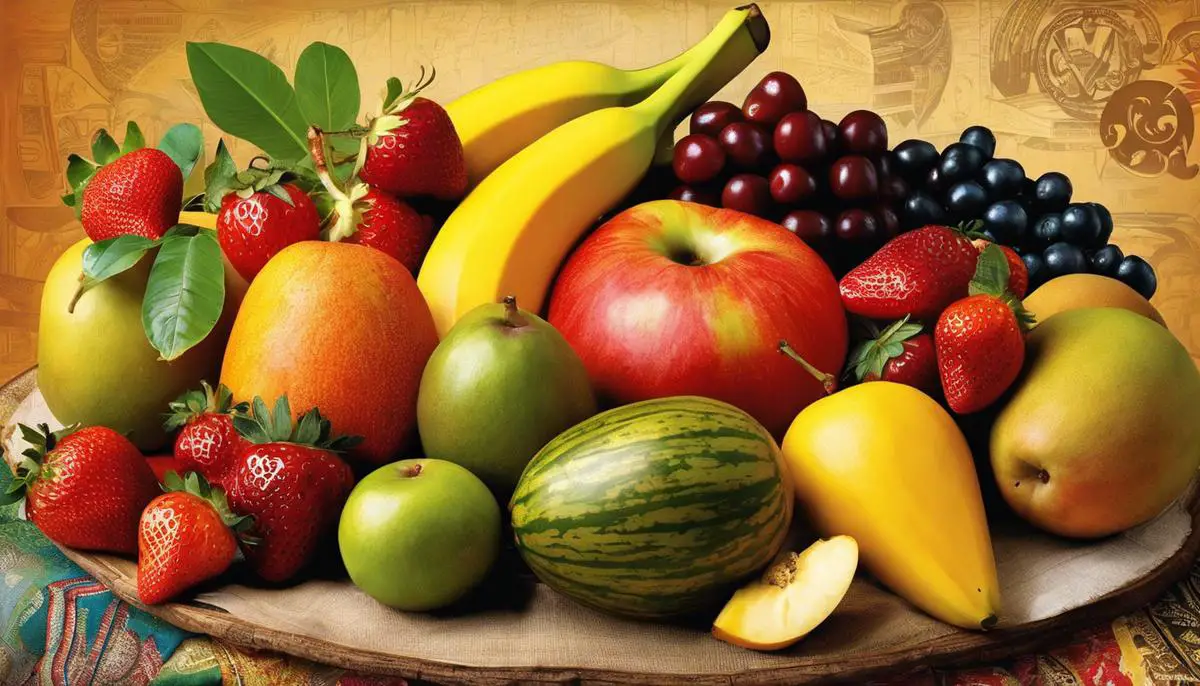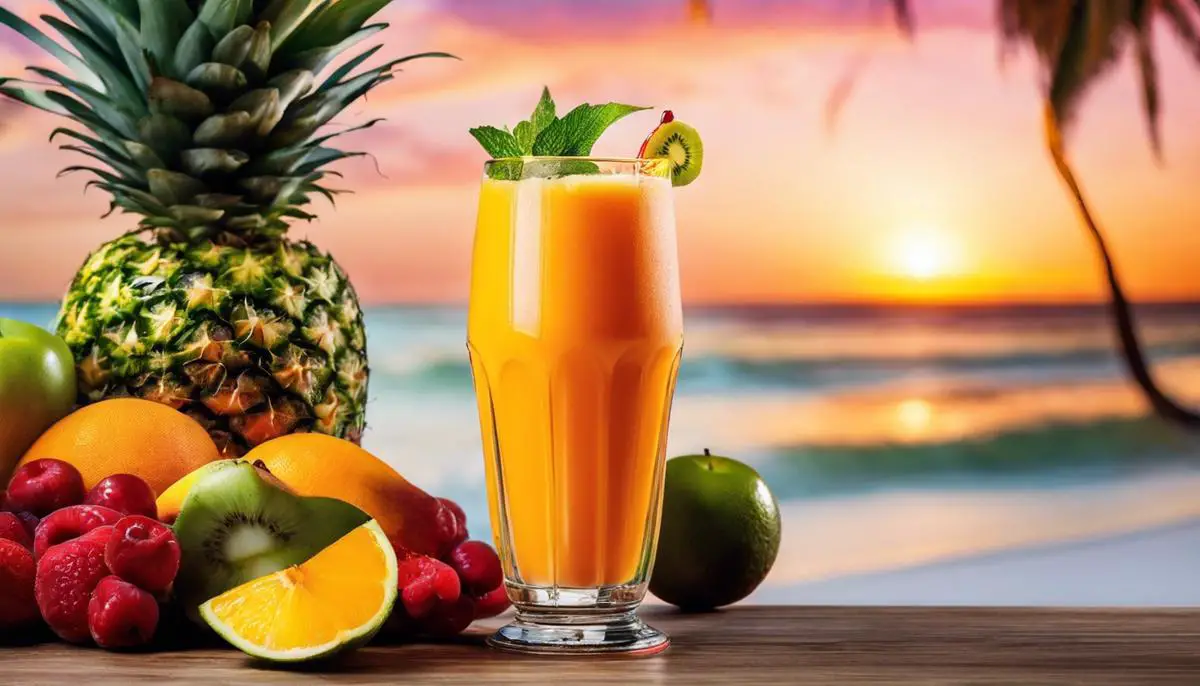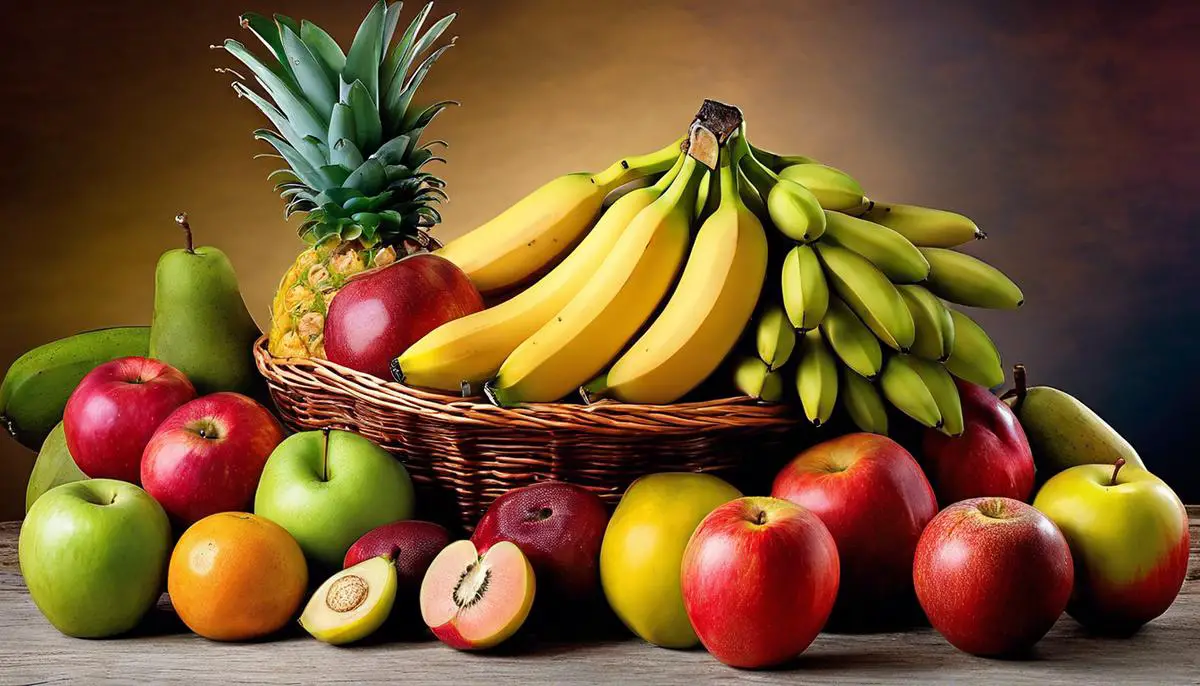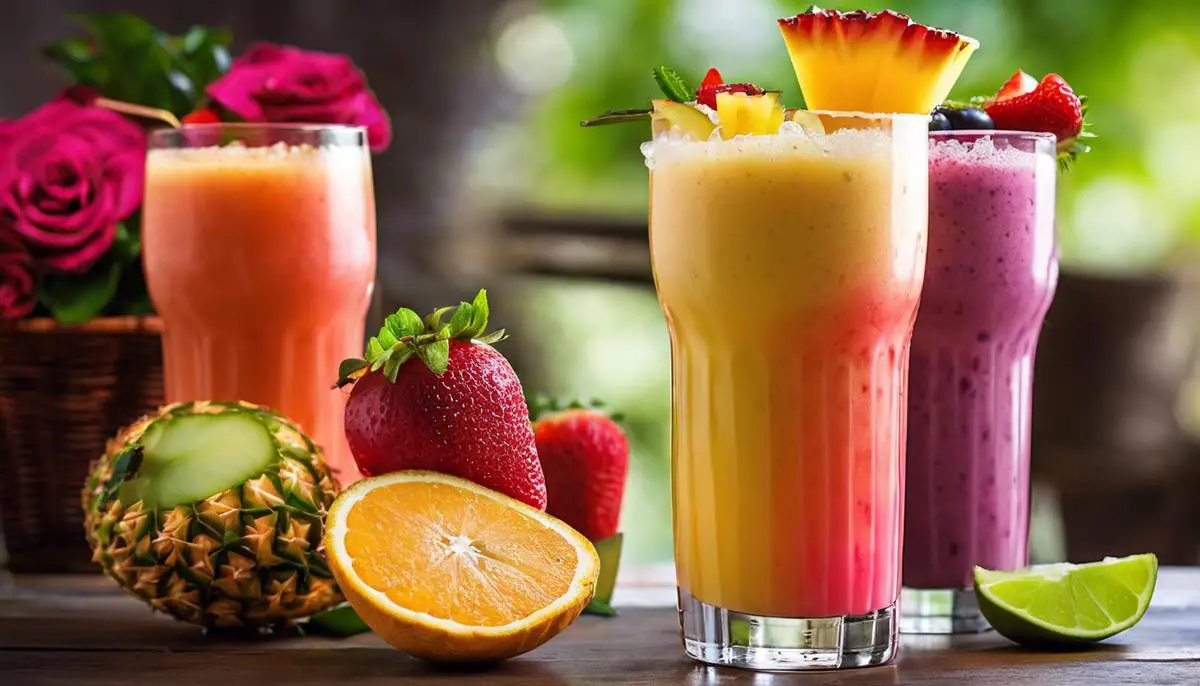
As the heat brings forth a yearning for refreshment, there’s one beloved treat emerging from the kitchens of Latin America that has stamped its mark worldwide – the Licuado. This delightful concoction is more than just a thirst-quencher; it is also a symbol of cultural heritage, a vessel of ingenuity, and a testament to the region’s hardy fruits. Delving into the heart of this drink’s origins, an intricate narrative unfolds, revealing how Licuados rose from simple homespun beverage to a global sensation. As we dissect the elements that make up this delightful blend, it’s essential to recognize the balance between the fruit’s vivacity, the dairy’s sumptuousness, and the sweetness’s subtle hints. Join us as we embark on an informative journey about Licuados – from its diverse ingredients and regional spins to the art of concocting your own.
The History and Origin of Licuados
From the Hispanic world to the health-conscious smoothie enthusiast plate, licuados have been slowly making their mark on the globe’s culinary map. These Mexican-style smoothies have become a staple in many Latin countries, admired for their refreshing taste and reputation as a healthy snack. But what is the secret behind these delicious delights? How did licuados come to be such a favorite amongst foodies worldwide? Dive into this flavorful journey that traverses continents and epochs!
Licuados, deriving their name from the Spanish verb “licuar,” meaning to blend, were initially a part of traditional Mexican cuisine. Their roots can be traced back to ancient Mayan and Aztec cultures who blended native fruits with water and other ingredients to create a thick, frothy beverage. This wonderfully symbiotic union of fresh fruits, often with a splash of milk, now swirls its way into the world of refreshing, nutrient-packed beverages.
Revolutionizing the concept of fusion food, the Spanish colonizers brought dairy to the Native American’s innovative fruit concoctions. The introduction of milk into the mix saw the birth of a creamy, smoothie-like texture, enhancing the refreshing flavor profiles of indigenous fruits like guava, pineapple, and mango. Round it off with a dollop of yogurt or a scoop of ice cream, and thus, our beloved licuados were born.
Today, a myriad of toppings and extra ingredients is available to customize one’s licuados to their heart’s content. From granola for that added crunch, a scoop of protein powder for the gym buffs, or a dollop of lush whipped cream for an opulent end note, licuados can hold their own in a cosmopolitan culinary space. These add-ons not only serve to customize, but they further up the nutrition ante, transforming the licuados from a mere refreshment to a powerhouse of nutrients.
In the era of globalization, the culinary exchange almost feels like a natural progression. As people migrate, they bring flavors and cooking techniques from their motherland and marry them with the native ingredients and habits of the host country. This process has brought the licuados out of Latin America and into the limelight of the worldwide health-conscious community. It goes without saying; these are not your average American-style milkshakes. Made without added sugars or any unnecessary fattening components, licuados stay true to their health-conscious roots, creating a delightful harmony of taste and nutrition.
From roadside stalls in Mexico city to trendy urban health joints, licuados have proven the test of time and continue to dominate menus worldwide. And why not? Their wholesome goodness, brimming with fresh fruit and the unmistakable creaminess of dairy, seasonal fruits, not to mention their infinite customizability, make them an untiring gastronomic marvel.
In the end, the rise of licuados as a delectable sippable speaks volumes about the role of food as a unifier. Whether it be ice-cold on a scorching California day or enjoyed at a beach-side bar in Cancun, the widespread love for licuados reflects how food dishes and trends can be equalizers, celebrating a shared love for cuisine, regardless of boundaries. What better way to enhance this global community than with a mesmerizing blend of flavors in a glass of licuados?

In-depth Exploring of Licuado Ingredients
As we delve into the thriving culinary landscape of licuados, it’s essential to analyze the integral components that construct this delicious, nutritious beverage. Whether it’s sipped from a market stand in Mexico City, or a chic cafe in Los Angeles, the iconic licuado is a sensory journey. Precision and balance are key as we explore the quintessential ingredients required for this perfect blend under the spotlight.
With roots embedded in ancient cultures, like all masterpieces, the composition of a licuado starts with a solid base. This usually comes in the form of a liquid foundation, typically water, milk, or yogurt. The use of dairy products can add a lush creaminess, while water constitutes a lighter fluidity. The type of base used dictates not only the density of the shake, but also its overall flavor profile, creating a tailored, customizable experience each sip of the way.
Next, the incorporation of fruits enters stage. Ranging from the humble banana or the crisp apple to exotic papayas and guavas, fruit communicates the true and vibrant essence of a licuado. Fruits also deepen the beverage’s nutritional value, as each type carries distinct health benefits, enriching the body and soul with every slurp.
To elevate the licuado further, introducing various ingredients and supplements can drastically transform its character while boosting its nutritive value. The addition of health-boosting greens like spinach, kale or herbs, can take the beverage from a simple fruit shake to a full-blown nutrient-dense concoction.
Underlain by an unwavering commitment to balance, a licuado artist always keeps the sweetness factor in check. Unlike traditional milkshakes, the licuado thrives on a natural kind of sweetness, typically derived from ripe fruits themselves. The paring of sweet and tart fruits can create a palatable beverage with a beautifully balanced sweetness.
Finally, texture and consistency are paramount considerations in building a licuado. The question of how thick or thin, chunky or smooth one wants their licuado can entirely modify the experience. A chunkier blend can give each sip an added crunch, while a smoother blend can make for a velvety, sippable mini-meal.
The singular journey of a licuado, from its humble origins to its global popularity, can be savored in every drop. This delicious health drink, steeped in tradition yet endlessly customizable, can be as simple or complex as the individual drinking it chooses. Just as food forms connections and bridges cultures and tastes, the Licuado links us to both the past and the future. Every sip brings us closer to the exploration of a new culinary world, rich in history, layered with flavors, and abundant with nutrition.

Licuado Variations and Regional Flavours
In delving into the captivating world of licuados, there’s a sense of wonder sparked by the varying renditions taken by different regions. This classic Latin American blend, synonymous with smoothies, courts a wide range of taste buds with its regional twists that extend beyond borders and dance on the tongues of eager gastronomes. The licuado seizes the art of simplicity yet propels the sense of culinary creativity to ladder heights.
In Argentina for instance, the famed Dulce de Leche goes beyond its celebrated role in pastries. This sweet, creamy milk-based sauce doubles as a preferred flavor for a licuado. Imagine the delightful interplay between the sweetness of Dulce de Leche and the tartness of assorted fruits! Likewise, in Guatemala, the licuado flaunts influences subtly drawn from their native ingredients. They tend to include chia seeds, which add a textural component, and support the locals’ overall health goals.
Let us not overlook the rise of the “Superfood Licuado” that has taken contemporary café menus by storm. Acai berries, Maca root powder or Moringa, these nutritional powerhouses have become a common-added twist to the licuados in many parts of Brazil and Argentina. Consider it an exciting modern evolution, yet what it truly demonstrates is an adaptability to dietary trends and a desire to meet consumers at their preference point.
Yet, the licuado’s magic lies in more than its blend of local flavors – it’s a canvas of experimentation, ripe for personalization. A prime example would be Mexico’s unique use of spices. A kick of chili can turn a classic fruity licuado into a refreshing and spicy beverage perfect for a hot summer day. These subtle nuances are what makes understanding and enjoying licuados a delicious journey.
Indeed, the journey of discovery continues to open up to even heartier avenues. In Peru and Colombia, licuados aren’t just seen as a sweet blend but also a savory option. Hence, you find herbal and even vegetable-infused licuados available. Flavors such as celery, cilantro or mint paired with base liquids like broth or coconut water become unexpectedly refreshing drinks, diversifying the traditional licuado narrative.
The beauty of licuados is that their identity morphs effortlessly in different regions while retaining their essence of health and flavor. Just as languages have their dialects, food too has subtle changes in each region that it manages to enchant, uniting people across the globe with a common love – the joy of savoring a well-made licuado.
It is this buoyant spirit of culinary exploration, housed within the seemingly humble licuado, that leads to an exciting food culture. These regional twists and individual preferences act as a culinary diary, chronicling the past and preferable tastes of civilizations. Indeed, each licuado holds a story, and with every sip, we become an integral part of its flavored narrative.

Creating Your Own Licuado: Techniques and Tips
Delving into the fine art of licuado-making is truly an adventure, marked by an exploration of taste, texture, and tradition. Beyond the base elements of this beloved Latin American beverage, there are numerous regional variations and innovations that are fascinating to explore.
Ice-cold licuados in Argentina are fondly characterized by the addition of Dulce de Leche, a divine concoction of caramelized sweet milk. This delectable touch contributes a luxuriously creamy texture to the drink, while drenching your taste buds in an irresistibly candy-like sweetness.
In Guatemala, licuados further embody the local population’s pursuit of health and wellness. The use of locally sourced fresh fruits is a given, yet the Guatemalans also incorporate native ingredients like chia seeds for added nutritional value. The end result is a licuado that is not just a thirst quencher but a health booster as well.
There’s also an emerging trend of “Superfood Licuados”. This innovation takes the humble licuado to a whole new echelon, harnessing the power of superfoods such as Acai berries, Maca root, and Goji berries. These aren’t just empty calories, but power-packed sips full of antioxidants, vitamins, and minerals.
Personalization is at the heart of licuado-crafting–the drink is a canvas open for infinite culinary creativity. It might involve incorporating a piece of unexpected fruit or adding a touch of in-house, or even daring to add spices like chili, a bold choice often seen in some parts of Mexico.
In Peru and Colombia, savoury licuados are pushing the envelope, drawing from local culinary traditions to forge a unique drink. Here, more than just finding a cooling respite in a licuado, it’s about discovering complex flavours and unexpected combinations.
In its essence, the humble licuado is poised as a reflection of local tastes, food culture, and individual preferences, but it goes way beyond that. Each licuado tells a story; it speaks of the very soil its ingredients were grown in, the hands that gathered them, and the creative vision behind its composition. Crafting your own licuado isn’t merely a culinary task; it’s a journey of sensory exploration, a celebration of past traditions and the possibilities of the future.
Food is a universal connector, and licuados, with their ability to nourish, refresh, surprise, and delight, are testament to that truth. They remain a tribute to regional food culture and preferences, blending rich histories with modern-day nutritional demands.
Armed with the basics of licuado-crafting and a sense of culinary adventure, you, too, can dive into the world of licuados. Start experimenting with different ingredients, explore regional variations, control the sweetness to your liking, and play with the texture for the desired consistency. Ultimately, be fearless with flavour, generous with freshness, and respectful of tradition. After all, food, or in this case, a satisfying licuado, is the best way to gather, connect, and celebrate our shared passion for the joys of the culinary world.

Ultimately, the essential aspect of the Licuado isn’t limited to its delightful flavors or the refreshing solace it offers during a sweltering afternoon. It’s about the beauty of creativity and individuality embodied in each blend. Whether it’s the well-loved traditional recipe or a daring fusion of exotic fruits and spices, every sip is a testament to this beverage’s versatility. By following the tried-and-tested techniques and being open to adding your own twist, a Licuado can be a quintessential expression of you. So, immerse yourself in the rich world of Licuados, relish in its diverse flavors and take delight in creating your masterpiece. As you embark on your journey to perfecting your Licuado, remember that comprehension of this humble beverage’s history and components is a key ingredient in crafting not just a drink, but an experience that’s distinctively yours.



